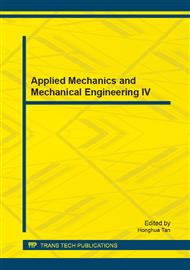p.195
p.201
p.207
p.212
p.222
p.228
p.232
p.239
p.245
A Dual-Arm Cooperating Physiotherapy Service Robot Based on Visual Position
Abstract:
This paper presents the scheme of a physiotherapy service robot including the mechanical architecture, control system, visual position system, etc. The robot can treat degenerative disease and chronic disease of middle-aged and aged people by Chinese massage skill, the main body of which includes a massage adjustable bed, two 4-DOF robot arms and two massage hands that can accomplish various massage manipulations. Two arms cooperate to improve the massage efficiency, and provide sufficient strength and enough reachable workspace for massage. The manipulators are controlled by a TRIO multi-axes motion controller and a embedded computer module. Physiological signal and massage pressure is detecting in real time in massage process to ensure a scientific and safe therapy. Vision System sends the recognized acupoint position to the master system to track the patients body, and the acupoint being massaged is displayed in real time by the 3D virtual display model. The robot can execute ten massage manipulations, which make traditional Chinese massage can have a robot instead. The effectiveness for degenerative lumbago in middle-aged and aged is demonstrated by laboratory examination and clinical trial.
Info:
Periodical:
Pages:
222-227
Citation:
Online since:
October 2013
Authors:
Price:
Сopyright:
© 2014 Trans Tech Publications Ltd. All Rights Reserved
Share:
Citation:


